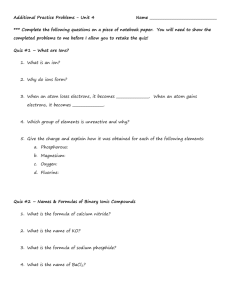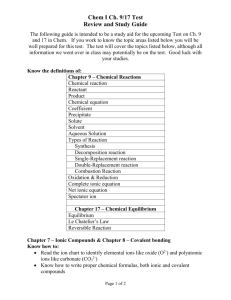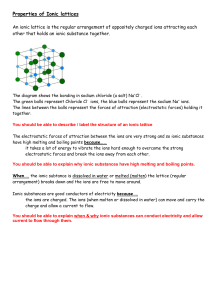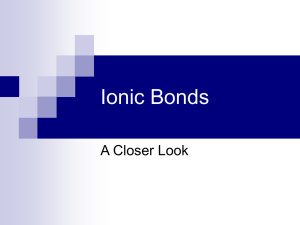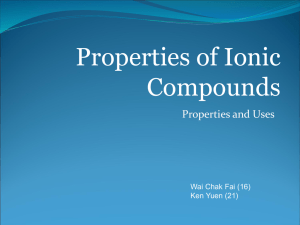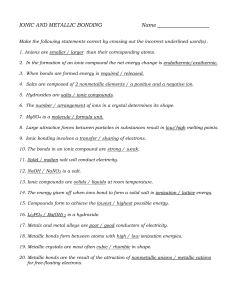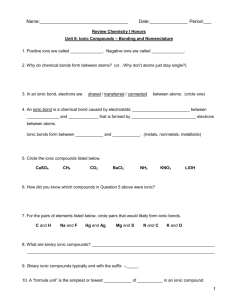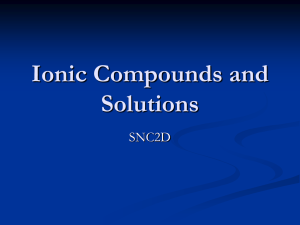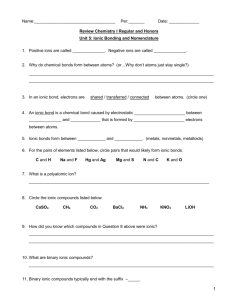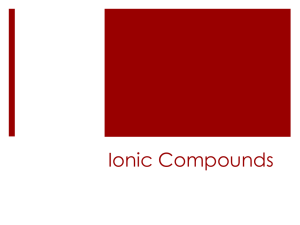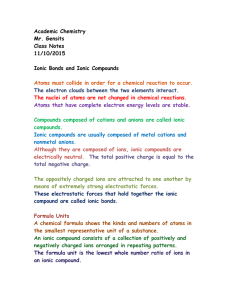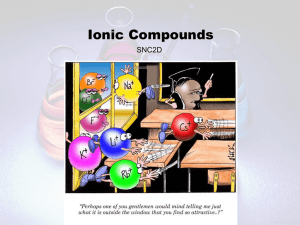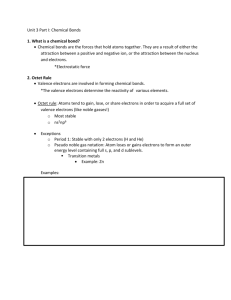ionic-bonds-and-properties-of-ionic
advertisement
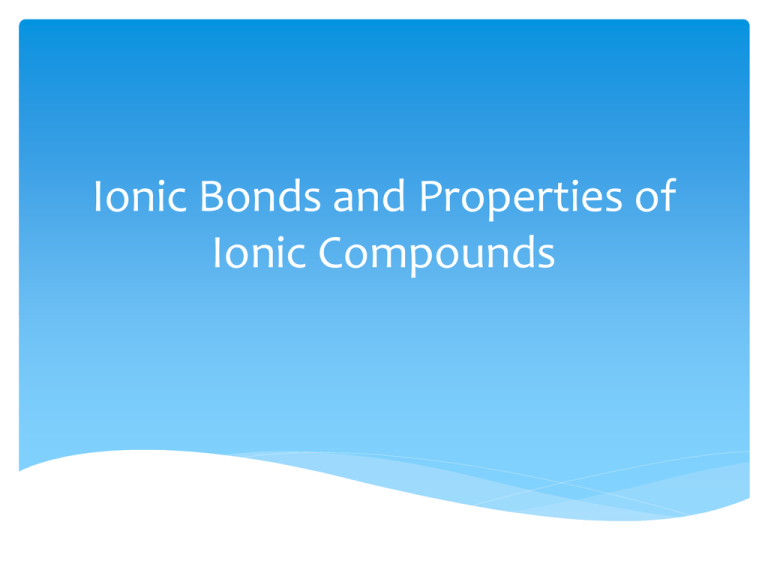
Ionic Bonds and Properties of Ionic Compounds Ions Recall that atoms lose or gain electrons to form ions. Metals tend to lose electrons and form positively charged ions called cations. Nonmetals tend to gain electrons and form negatively charged particles called anions. They do this to acquire a stable octet (full outer energy level – usually 8 valence electrons). For the representative elements (groups 1,2 &1-17) we can tell the charge of the ion by the number of valence electrons. Remember: 1+, 2+, 3+, skip, 3-, 2-, 1-, zip! Ionic Compounds Because opposites attract, cations and anions are attracted to each other and form neutral compounds often referred to as salts. Since the positive and negative charges have to zero out, the formula for an ionic compound will give the ratio of each element. Individual particles of an ionic compound are called formula units, but they do not exist in isolation. They form a repeating crystalline structure called a crystal lattice. Properties of Ionic Compounds Let’s fill in the chart!! Think about it for a minute – what ionic compound are you very familiar with? Table salt – sodium chloride. You worked in lab with several other salts. What state of matter were they all at room temperature? If you said solids you are correct!! Now think about why that might be. It is because of the strong attractive forces among the ions and formula units Melting & Boiling Points Have you ever tried to melt table salt? If so it probably didn’t work very well. Why? Melting and boiling points of ionic compounds are relatively high. Why? Those strong bonds that make them solids at room temperature also require lots of energy to break thus resulting in high melting and boiling points. Solubility Generally when we talk about solubility, we are referring to solubility in water. Ionic compounds are usually soluble in water. Why? Water molecules are polar (we’ll talk more about that later) and will pull the ions apart. Response to Stress or Deformation What does that mean??? Basically it means if you hit it with a hammer, what happens??? Yep, it crumbles – that’s because ionic compounds tend to be brittle. Why? In the crystal lattice, ions have to be lined up with opposite charges and if that gets shifted, then like charges repel - it breaks!! Conductivity As solids, ionic compounds are not good conductors of electricity. However, when dissolved in water or in a molten state they are good conductors. Why? In order to move electrons (that’s what an electrical current is) you need charged particles – in this case ions- for them to move through. Within the crystal lattice, there are no loose charged particles for transferring the electrons!!
